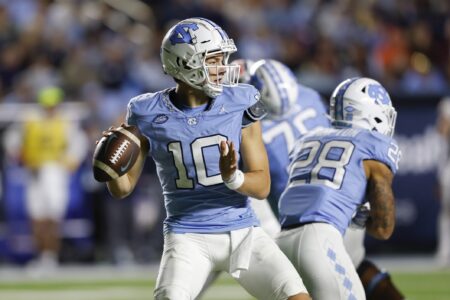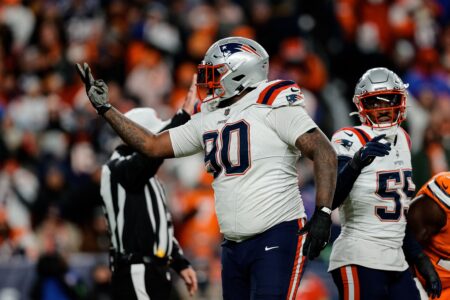Seymour93
Experienced Starter w/First Big Contract
- Joined
- Sep 13, 2004
- Messages
- 5,667
- Reaction score
- 1
Just how awesome is our d-line? Warren and Seymour are two Probowlers (well Warren should be), while Wilfork is a beast. Now Mike Wright wants in.
http://www.patriots.com/news/index.cfm?ac=latestnewsdetail&pid=21210&pcid=41
Whether the switch to the 4-3 was forced by Wright's improved play, the lack of fitness/depth at LB, or a combination of the two, it's a rare occurrence this 3-4 team plays in the traditional set. If Wright can keep up with WWS (Warren-Wilfork-Seymour), we could have the second best defensive line in the league just behind the Jags.
http://www.patriots.com/news/index.cfm?ac=latestnewsdetail&pid=21210&pcid=41
“It felt pretty good to go out there and be a part of the first team and players that good. To be a part of those guys really means something,†said [Defensive lineman Mike] Wright with a smile.
“It’s time to be one of the big boys,†said the voice across the locker room.
At 6-4, 295 pounds, it seems safe to say that Wright has been a big boy for quite some time now. What the voice was referring to was the fact that Wright had his first career start this week.
Wright started Sunday’s game against the Jets along side three first-round picks on the Patriots defensive line, which was shifted from its usual 3-4 to a less common 4-3. Wright was not a first-round pick, however. In fact, he wasn’t picked at all in the 2005 NFL draft. The Patriots signed him as a free agent.
“It does feel great [to start with the first-rounders]. But it was also a feeling of, ‘I want to show what I can do.’ I want to show everybody in New England that I can help this team even though I came up from the bottom.â€
Whether the switch to the 4-3 was forced by Wright's improved play, the lack of fitness/depth at LB, or a combination of the two, it's a rare occurrence this 3-4 team plays in the traditional set. If Wright can keep up with WWS (Warren-Wilfork-Seymour), we could have the second best defensive line in the league just behind the Jags.
















